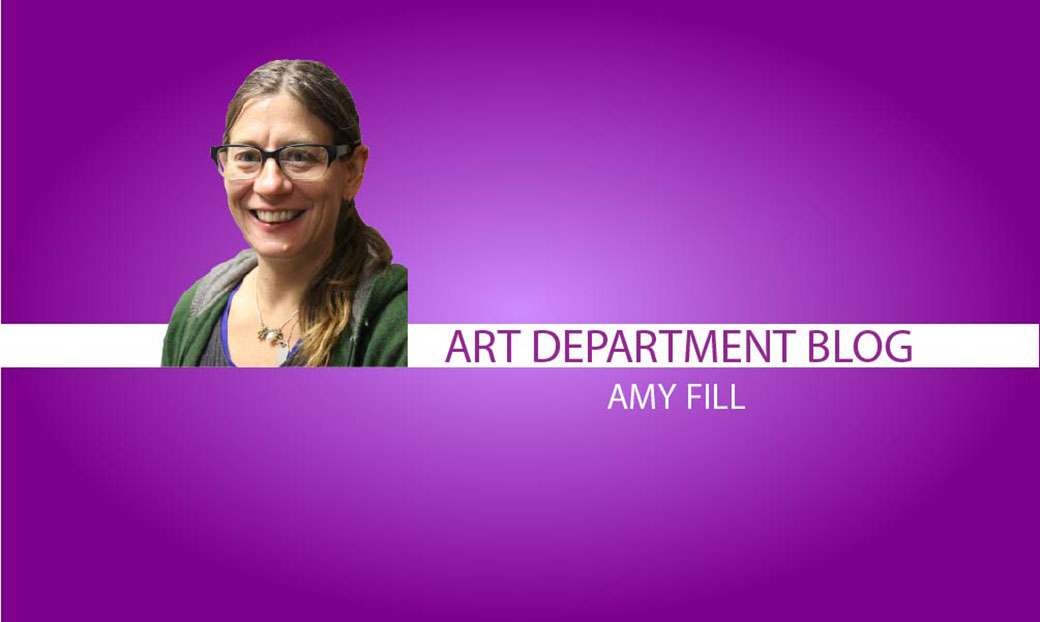
Students showcase collaborative works in library art exhibit
The fourth annual “Corroborations” exhibit is on display on the second floor of the I.D. Weeks Library.
The “Corroborations” project pairs University of South Dakota visual arts majors with poetry majors from the English department. Undergraduate, graduate and doctoral students create new collaborative work and broaden acceptance and appreciation of alternative art disciplines. Nine artist pairs were selected for this year’s project.
Michelle St. Vrain, interim director of University Art Galleries, and Audrey Larsen, an adjunct English teaching instructor, selected the pairings. There is no set theme to this exhibition — however, all the work created as a result of these collaborations is new and original. Each of the selected pairs was free to choose how they approached the collaborative process.
I participated in this year’s corroboration — my poet partner, Teniesha Kessler, and I met in person to exchange ideas about possible approaches to the project and about our own working processes. We also discussed similarities in our working styles.
We found nature is a theme that runs through our content. Teniesha uses the written word to describe places within the prairie landscape, and my works use materials to symbolize elements within nature and the landscape. Teniesha’s poetry speaks of memory and life, and it contains a surrealistic stream of conscious flow, and my works touch on fleeting moments.
We considered our collaborative options and decided that she would provide samples of her poetry, and I would choose one and respond visually.
I read each of the eight poems several times and during the first two weeks contemplated differing ways to approach the content of the poem and what materials I would use to represent visually the moments and subject within that poem.
I chose a poem titled “We strolled in our secret garden.”
I created several sketches focusing on my interpretation of the places described in the poem. The images I found in this poem reminded me of places and memories from my own life and how memories can weave themselves together.
We bring our own interpretation of content and subject matter with us when we encounter a work of art or a poem. Each of us has different personal experiences, and each of us live with different customs depending on our locations.
The poem I chose begins with a description of an abandoned barn set within the dry summer prairie landscape. I have experienced the harsh heat of the South Dakota prairie, which spoke to my sensory memory, and my mind was flooded with images of the many barns I have explored in my life.
Thinking of the word on the page as a type of a drawing, I recreated the text and format of her poem in my handwriting, line by line on a sheet of black paper. I then hand-cut and removed the negative space around each word of each of the sentences, using quilting pins to suspend each sentence vertically in a row within the glass display cases.
The orientation of the finished work abstracts the text and allows the hand cut sentences to become an object of their own. It also creates a space for each individual viewer to find their own meaning and their own visual images relating to the poem.
The “Corroborations” exhibition will be on display through April. A poetry reading and discussion about the project will be held April 23 from 4:30 p.m. to 6 p.m.

